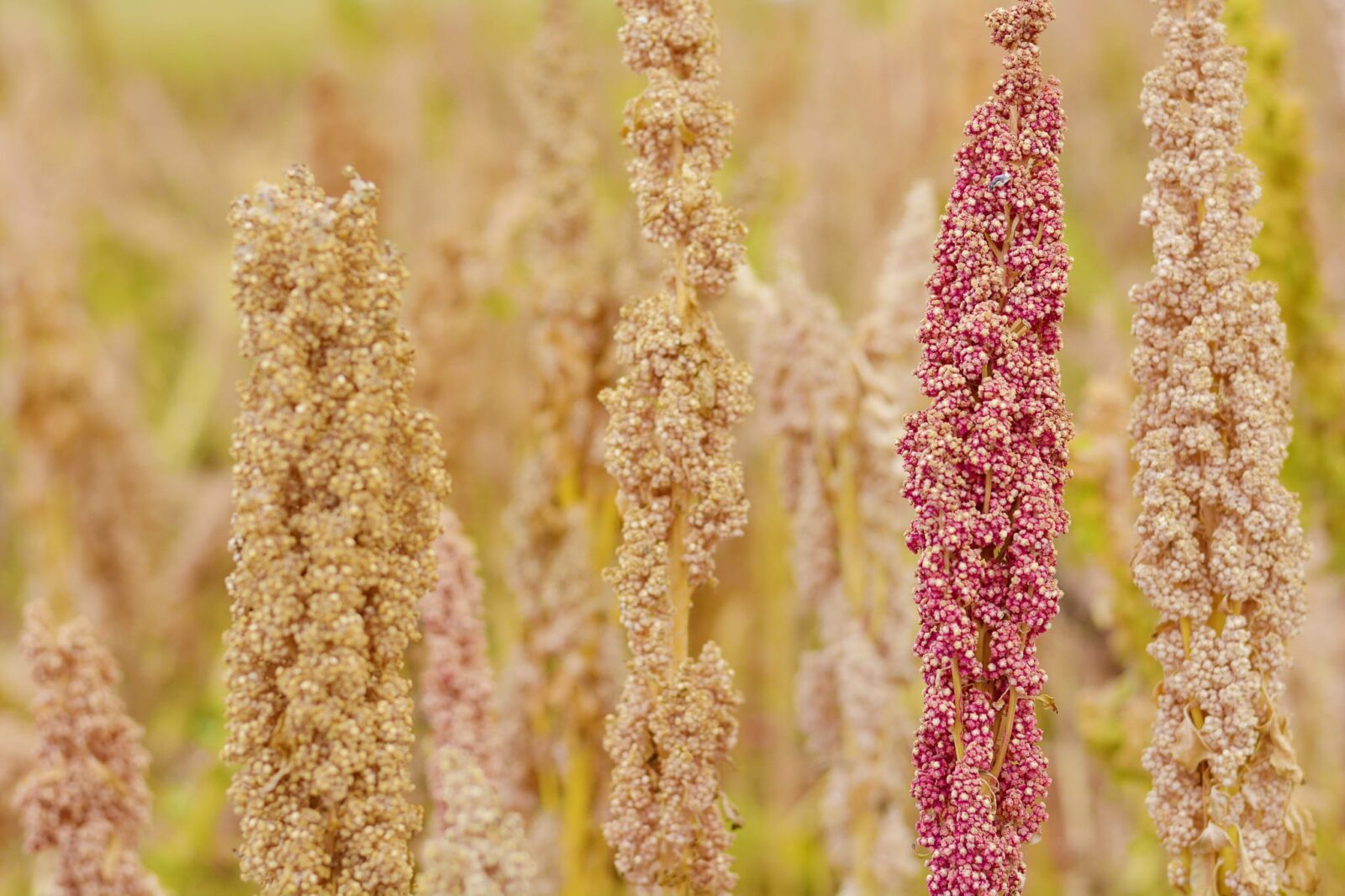National Strategy launched to connect Australian students with Food and Fibre Education
 EMERGING INDUSTRIES / Tuesday, 9 April 2024
EMERGING INDUSTRIES / Tuesday, 9 April 2024
A superfood renaissance down under: AgriFutures Australia announces new research plan for the quinoa industry

Known for its ancient origins and impressive nutritional profile, quinoa has not only captured the attention of health-conscious consumers globally, but also some entrepreneurial Australian farmers.
Quinoa fuelled ancient Andean civilisations in South America for more than 7,000 years. However, when the Spanish arrived in South America, quinoa cropping diminished as European grains were introduced, and as a result development required for modern farming systems has been hindered despite its high nutritional value.
Unlike most grains such as wheat, quinoa is gluten-free and has a low glycaemic index (GI) which means it releases energy slowly. These nutritional properties, along with high protein levels and essential amino acids has earned it the “superfood” title. These qualities make quinoa highly suitable for those with coeliac disease and people at risk of developing diabetes, obesity or cardiac diseases.
Moving away from being just a “grain in a bag” on retail shelves, quinoa has crept into mainstream food products and cafe culture around Australia. To foster the development of this emerging industry, AgriFutures Australia commissioned the Australian Quinoa Industry RD&E Plan 2024-2029 as a comprehensive roadmap including research and development recommendations critical to the industry’s growth and long-term sustainability.
Researcher and plant breeder at Murdoch University, Dr Jon Clements, who co-authored the Plan, said there are exciting opportunities within the quinoa industry.
“The superfood boom has come off the boil with global prices peaking around 2014 and production around 2015, but quinoa is still holding its own thanks to it being low GI, gluten free and being in the top five crops for quality in terms of plant sourced proteins,” Dr Clements said.
Priorities outlined in the plan are the development of new quinoa varieties, increasing consumer demand, establishing an industry network, improving agronomic practices, and conducting economic analyses of supply chains.
AgriFutures Australia Senior Manager, Emerging Industries, Dr Olivia Reynolds, highlighted the importance of ongoing diversification for the quinoa industry.
“The key to unlocking quinoa’s full potential lies in addressing knowledge gaps. By addressing the priorities outlined in the plan, the industry can unlock the full economic potential, benefiting rural communities and stakeholders across the value chain,” Dr Reynolds explained.
The RD&E Plan identifies high-priority areas for investment, which have been selected based on industry consultation with a diverse outlook.
Industry Development Specialist, Mr Doug Hall, another co-author of the Plan, explained that it was developed with the assistance of dedicated seed producers, growers, importers, manufacturers, wholesalers and retailers. “It is encouraging to see that the industry appears to have developed strong connections along its supply chains,” Mr Hall said.
“We feel that the best part of having an RD&E Plan is that it will help industry invest wisely by highlighting a recommended order of research and industry development priorities” Mr Hall explained.
The RD&E Plan also aims to provide growers with the tools and information needed to navigate challenges that inevitably arise when new crops are introduced into Australian production systems including selecting improved varieties for Australian conditions and optimising farming practices for these new varieties.
“In developing this plan, we discovered the challenges facing domestic quinoa production, particularly competition from imported sources, consumer accessibility and price competitiveness,” Dr Reynolds explained.
“Quinoa produced in South America sets the international benchmark for high quality and price competitiveness. That is why in our view the most important priority is the development of ‘fit-for-purpose’ varieties for Australian growing regions which in turn should translate into lower cost of production” Mr Hall said.
“While Australian exports of quinoa face stiff competition from international suppliers, we do see the potential for exports of ‘clean-green’ Australian grown quinoa.” Dr Clements said.
As the Australian Quinoa RD&E Plan is explored by industry, we are confident that it will assist the industry to grow and become more competitive.
“The RD&E Plan underscores our commitment to equipping Australian growers with the knowledge and tools necessary to thrive in the face of evolving market dynamics and challenges,” Dr Reynolds said.
It provides an industry-led approach to research, development, and extension priorities, supporting the industry’s maturation. Investors and research provider’s alike can pick up this plan and address those areas which require investment, knowing these are industry priorities that will enable growth.
Quinoa’s journey is a testament to AgriFutures Australia’s commitment to fostering innovation, sustainability, and economic prosperity for our rural industries now, and into the future.
Read the Australian Quinoa Industry RD&E Plan 2024-2029 here
View more information on AgriFutures Emerging Industries Program here
Subscribe to the AgriFutures Emerging Industries mailing list here
Further Resources
Latest News
-
National Strategy launched to connect Australian students with Food and Fibre Education WORKFORCE AND LEADERSHIP / 09.04.24
WORKFORCE AND LEADERSHIP / 09.04.24 -
Supplementary feeding can build and maintain hives amid stress HONEY BEE & POLLINATION / 09.04.24
HONEY BEE & POLLINATION / 09.04.24 -
AgriFutures Rural Women’s Award celebrates 25 years of impact WORKFORCE AND LEADERSHIP / 09.04.24
WORKFORCE AND LEADERSHIP / 09.04.24 -
Industrial Hemp: Australia’s next sustainable super crop INDUSTRIAL HEMP / 09.04.24
INDUSTRIAL HEMP / 09.04.24






